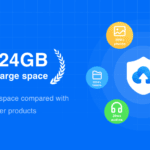So count on us on this journey, because in this article we will cover what a back-end language is, which are the most used, what a developer does in the area and you will know the difference between the back-end and the front-end .

What is a backend language?
A back-end language allows the coding of the operating logic of back-end applications , that is, what occurs behind the scenes of a program. It is, in practice, the processing that occurs that the user cannot see.
These applications are bridges that connect the actions visible in the system interface with a server , which allows access to the database.
This way, it is possible to list, edit, delete and register new information. The languages also allow the creation of security mechanisms, which validate the user’s access and check whether they have permission to carry out the actions they want.
How important is back-end language for technology?
Back-end languages allow the construction of codes to perform client-server communication , through the creation of APIs . In this sense, the client could be a web, mobile or desktop application.
The server would be responsible for storing the database with the system information. The big advantage of building APIs is code reuse and ease of maintenance, since the back-end and front-end are separated.
What does a back-end developer do?
A back-end developer is responsible for implementing an application’s business rules . That is, create the necessary functionalities so that the system interface can communicate with a database. This is possible through a back-end language, which allows you to code the logic.
In this scenario, a connection is made between the application and a server. This way, the system will be able to communicate with the database. It is also up to the back-end developer to ensure the security of the application and its data .
What are the 7 most used back-end languages for programming?
Low-level languages
Low-level languages are those interpreted by machines . In this sense, all instructions are in binary format , that is, zeros and ones .
1. Assembly Language
Assembly is a language that communicates directly with the machine through zeros and ones. For human understanding and programming in this language to be possible, a set of symbols, called mnemonics , are used, such as “ADD” for add and “MOV” for move.
- Performance: the language has a reduced size because it uses bits in its construction. Furthermore, it is recommended for the construction of actions in which time is an impacting factor, as the execution of the language is fast;
- Creation of complex functions: Assembly can be used to develop complex functionalities, which would hardly be possible in high-level languages.
Assembly is not a simple language. Therefore, programming with it can take time . Furthermore, as it interacts directly with the machine, it is necessary to have knowledge of the hardware components that the computer has and their limitations.
Assembly is still used to make applications communicate with hardware and to execute specific functionalities on a machine.
Intermediate-level languages
These are languages that have an affinity with hardware, but that also make it easier for the programmer to understand the code.
2. C language
C is a language used in creating operating systems and back-end applications .
- Portability: C is a portable language, this means it can run on multiple operating systems;
- Proximity to hardware: as it is an intermediate-level back-end language, C allows access to machine resources, such as the processor;
- Modular: the language uses modules, which means that what you write in a certain function will not affect another block of the program.
The C language does not offer much support for connecting to networks and does not have advanced security features .
The language is present in several systems, mainly operating systems and desktop software.
3. C++ language
It is a back-end language based on C , but with improved features. In addition to being object-oriented , it is a language that allows access to hardware and is used to build back-end systems, operating systems, databases, games and others.
- Portability: like C, C++ can run on different platforms;
- Memory management: it is a more efficient language, as it allows the management of the machine’s memory allocation;
- Object orientation: this aspect allows the construction of standardized and concise code.
Although granting access to hardware is a positive point of C++, this aspect can also be exploited by malicious agents, opening security holes in the machine.
The C++ language is used to build operating systems, games, back-end applications, and more.
High-level languages
They are languages closest to human understanding . For a machine to understand these languages, it is necessary to use a compiler, which will translate the high-level language into the low-level language.
4. JavaScript Language
JavaScript emerged with the function of bringing interactivity to the elements of a web page . However, as time passed and as it gained popularity, the language acquired new functions.
Thus, JavaScript began to act not only on the client side, in browsers, but also on the server. Thanks to Node Js and Express Js it is possible to create back-end code , allowing database queries and the creation of APIs.
- Speed: JavaScript is a language that can be used on the front-end and back-end, allowing for faster software development services
- Hybrid applications: the language allows not only the back-end to be built with JS, but also web and mobile applications;
- Cost reduction: thanks to the flexibility of the language, the costs of hiring people are reduced, as it is not necessary to know different languages to work on building interfaces and implementing business rules;
JavaScript offers a lot of flexibility in building code . Therefore, the application development pattern can become confusing.
JavaScript can be applied to building hybrid back-end, web and mobile applications . For this there are several frameworks and libraries, such as React JS , Angular , Vue and React Native.
5. PHP Language
It is a language with market time. In addition to being object-oriented , it also allows easy connection to various databases and also allows integration with HTML and CSS .
- Support: PHP has a large community of users, as well as forums and websites that help answer questions ;
- MVC: model-view-controller (MVC) is an architecture that assists in custom software development services, separating code responsibilities into interface, controller (intermediary between the view and the model) and model (object or data);
PHP does not have more modern features and security infrastructure compared to more modern languages, such as Ruby. Furthermore, misuse of the language can lead to errors in the code.
PHP is mainly used to create back-end applications, but it also allows the incorporation of HTML and CSS to create web systems.
6. Ruby Language
Ruby is a language that emerged in the 90s. It is used for developing back-end and web applications .
- Libraries: Ruby is a language that has many native features and also a vast third-party library to be used;
- Testing resources: Ruby has an affinity for resources for creating automated tests;
- Ease of use: it is a language with a quick learning syntax, which makes Ruby widely used for creating prototypes, which are more simplified and faster to develop.
Ruby, compared to other back-end languages, is new to the market. This means that the community of people involved in resolving problems and queries is smaller, meaning there is not as much support .
Ruby can be used to build back-end and web applications, with the help of the Ruby on Rails framework.
7. Python Language
Python is a modern language and has been gaining favor in the market. In addition to being used in the back-end , it can also be applied in data analysis, machine learning and web development .
- Easy to learn: Python is a language that has a very readable syntax. This makes it simple to learn and recommended for beginners;
- Libraries: this is a language with several third-party resources available for use;
- Internet of Things (IoT) resources : Python also allows the construction of hardware.
Despite the vast amount of libraries to be used, Python is also heavily dependent on them . Therefore, for a more advanced use of the language, it will be necessary to be at their mercy.
Back-end, web, data analysis, machine learning, and internet of things applications are using python
Front-end and back-end languages differences
The front-end is used to build the visual part of the system . That is, the screens and elements that the user will use to navigate and interact with the application. It is also the responsibility of the front-end to ensure a good user experience and accessibility features.
The back-end, in turn, takes care of the interaction between the application and the server . In this scenario, there are database queries, listing of information, recording and updating new data and implementing other business rules that involve the functioning of the system.
Author Bio:

Glad you are reading this. I’m Yokesh Shankar, the COO at Sparkout Tech – software development services one of the primary founders of a highly creative space. I’m more associated with digital transformation solutions for global issues. Nurturing in Fintech, Supply chain, AR VR solutions, Real estate, and other sectors vitalizing new-age technology, I see this space as a forum to share and seek information. Writing and reading give me more clarity about what I need.








